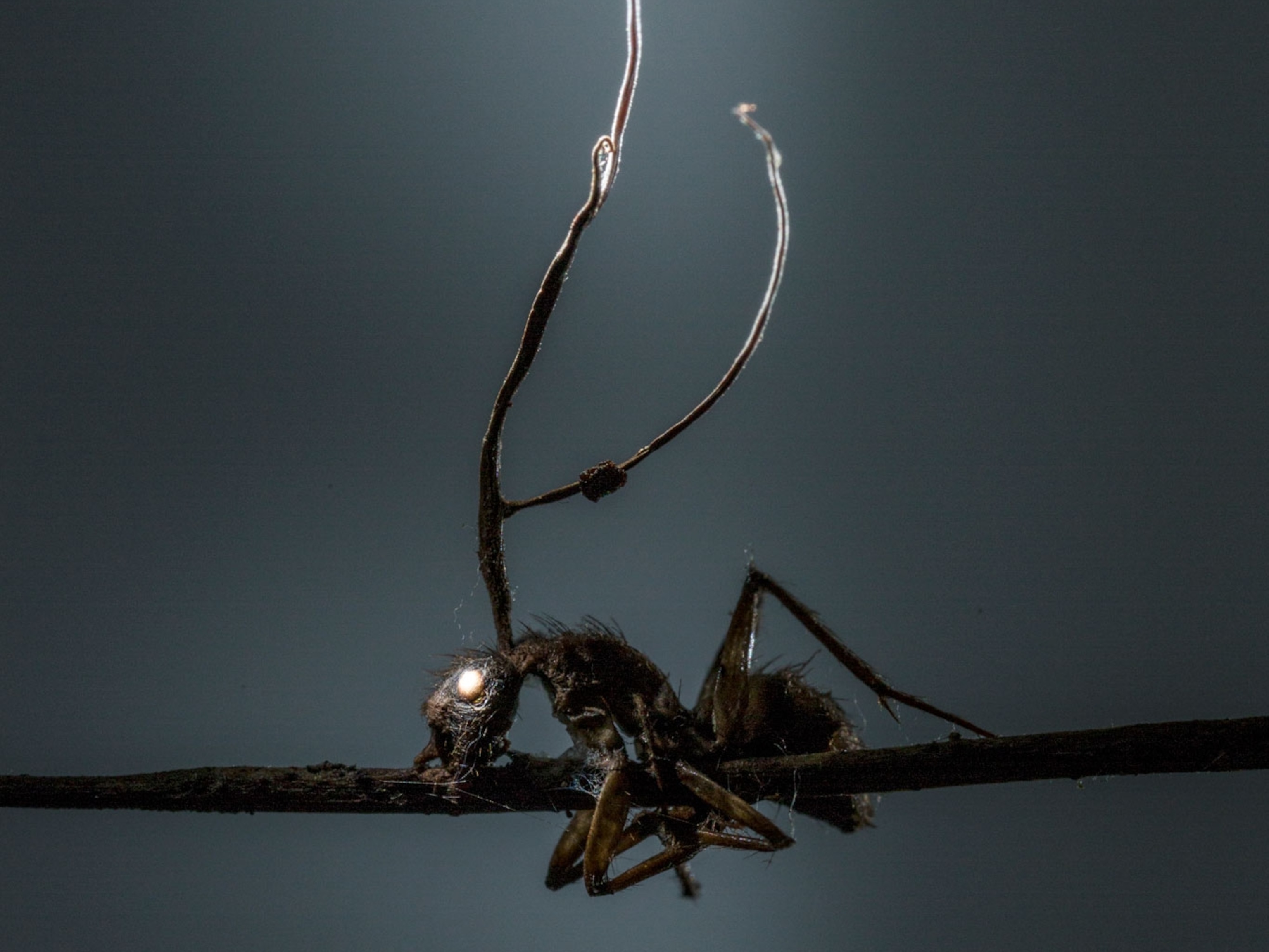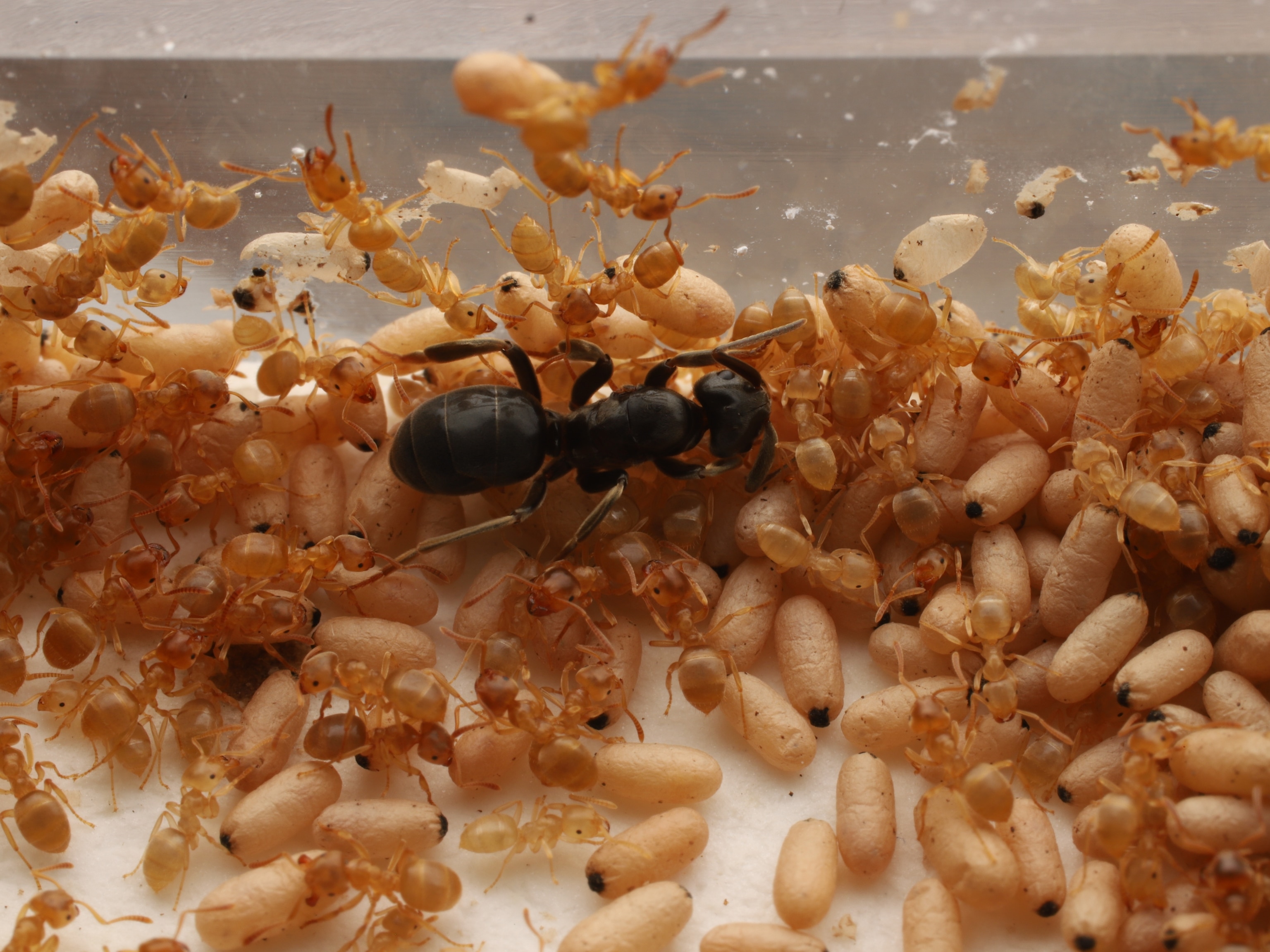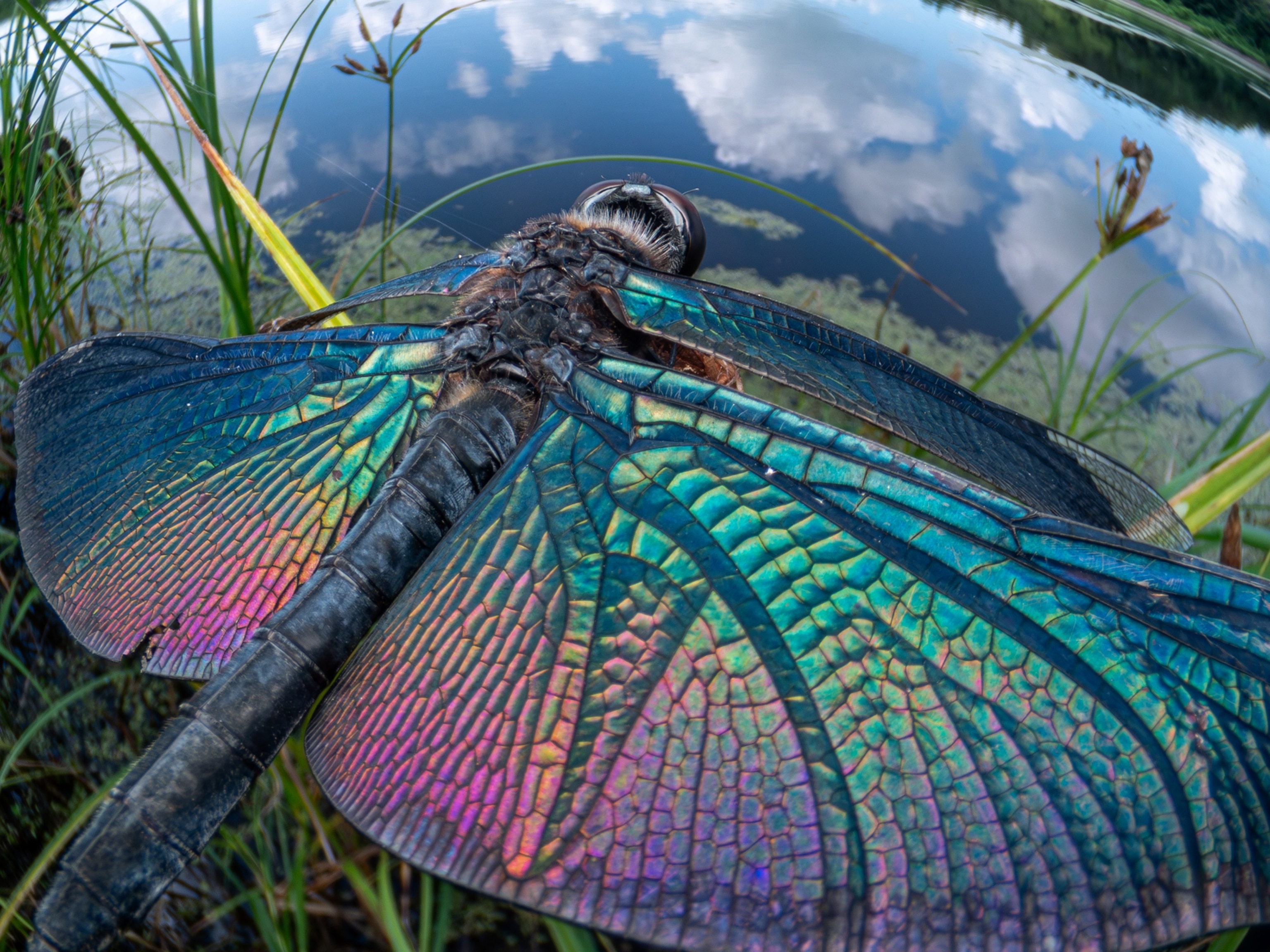
Ants make ‘milk’? This new discovery took scientists by surprise
Researchers thought they knew ants intimately. Then they looked at the pupae.
For more than a century, ant colonies have been the subject of endless research and fascination. The extent to which ants work together as a unit has led some scientists to consider them to be one superorganism.
But for all the focus on the ants’ frantic activities, researchers have rarely focused on the ants’ pupal stage, during which they metamorphose from larvae into adult ants.


“They don’t move, they don’t eat, they don’t do anything that’s obvious amid all the hubbub going on in the colony,” says Daniel Kronauer of Rockefeller University in New York, who’s a myrmecologist, the term for scientists who study ants.
In a new paper published this week in Nature, Kronauer and his colleagues report that often-overlooked ant pupae provide a crucial service to the colony: Their developing bodies make a milk-like substance that provides important nutrients to the rest of the colony. And not just in one species, but in at least one species in each of five major ant subfamilies.
Such a wide-reaching discovery suggests the milky excretions may be common in many more ant species, Kronauer says, and that they may have originated early in the evolution of all ants.
“I was surprised,” says Susanne Foitzik of the University of Mainz in Germany, who was not involved in the study, “as I did not see this before, despite watching ants for three decades. I am really curious and will start my own observations as soon as possible.”
Drowning in milk
The intriguing liquid was discovered by Orli Snir, a postdoctoral fellow who had not worked with ants before she joined the Kronauer lab. With fresh eyes, she quickly noticed behaviors that didn’t seem to be explained by the existing scientific literature.
“People have studied ants for a hundred years,” Kronauer remembers thinking, “so what is [Snir] talking about?”
But he did agree when Snir proposed an unusual experiment. Instead of trying to make sense of the combined activity within the colony, where pupae and larvae are constantly being groomed, moved around or even piled together, she decided to watch the pupae in isolation. It took time to figure out how to keep them alive, but eventually, she found the right temperature and humidity level. Then, something really weird happened: the pupae were producing a liquid, and lots of it.
So much, in fact, that many were drowning in it, says Snir, at least if they didn’t die from a fungal infection first. Was this an abnormal phenomenon due to the pupae’s isolation from the colony, or something entirely normal that had gone unnoticed until now? To find out, Snir injected blue food dye into the opening where the fluid was coming from and put the bluish pupae back in the colony. (Read how ants led paleontologists to discover 10 new species of ancient mammals).
Soon enough, she noticed adult ants removing the liquid from the pupae and swallowing it, as revealed by the blue color spreading through their guts. They also often deposited young larvae on the pupae, which were also feeding on the liquid; they turned blue as well.
A kind of social glue
The finding has surprised and delighted the worldwide community of myrmecologists.
“This is a very solid and well-designed study,” says myrmecologist Laurent Keller of the University of Lausanne in Switzerland, who agrees the phenomenon may be quite common.
Bert Hölldobler of Arizona State University, who has studied ants since the 1960s, says he once suspected there might be something about the pupae that attracts adults.
“I never picked up this topic again,” he says, “although it remained in my mind. I am absolutely delighted these researchers did.”
A chemical analysis of the liquid revealed that, besides other waste products from the metamorphosis, it contains all essential amino acids, as well as multiple carbohydrates and some vitamins. Pupae in other insect species tend to reabsorb and recycle these nutritious liquids, says Kronauer. (Read about the unlikely rise of antkeeping).
The sharing of nutrients among different life stages in ants may be at the root of the intensely social lifestyle that these insects have evolved over millions of years, Kronauer and Snir suggest. “This makes ants in different life stages depend on each other,” says Kronauer. “It’s a kind of social glue that keeps them together.”
Adria Le Boeuf, a myrmecologist at the University of Fribourg in Switzerland studying the exchange of nutritious substances between ant larvae and adults, agrees. She adds that they may have paved the way to the more complex behaviors she is investigating. “This fluid may have aided the evolution of [the ants’] cooperative brood care, as it incentivized adults to care for the young. And once ants started drinking this, that may have set the stage for the transfer of other things.”
Are a few sips of pupal fluid really the root of ants’ ever-expanding sharing economy? Digging deeper in future research is likely to yield ever more discoveries of one of the planet’s most widely studied and yet still very mysterious groups of insects.




